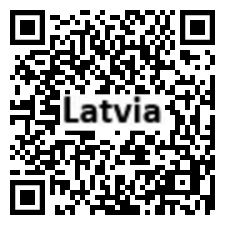Introduction
Background
Several eastern Baltic tribes merged in medieval times to form the ethnic core of the Latvian people (ca. 8th-12th centuries A.D.). The region subsequently came under the control of Germans, Poles, Swedes, and finally, Russians. Latvia reestablished its independence in 1991 following the breakup of the Soviet Union.
Geography
Area
total: 64,589 sq km
land: 62,249 sq km
water: 2,340 sq km
Climate
maritime; wet, moderate winters
Natural resources
peat, limestone, dolomite, amber, hydropower, timber, arable land
People and Society
Population
1,821,750 (2023 est.)
Ethnic groups
Latvian 62.7%, Russian 24.5%, Belarusian 3.1%, Ukrainian 2.2%, Polish 2%, Lithuanian 1.1%, other 1.8%, unspecified 2.6% (2021 est.)
Languages
Latvian (official) 56.3%, Russian 33.8%, other 0.6% (includes Polish, Ukrainian, and Belarusian), unspecified 9.4%; note - data represent language usually spoken at home (2011 est.)
Religions
Lutheran 36.2%, Roman Catholic 19.5%, Orthodox 19.1%, other Christian 1.6%, other 0.1%, unspecified/none 23.5% (2017 est.)
Population growth rate
-1.13% (2023 est.)
Government
Government type
parliamentary republic
Capital
name: Riga
Executive branch
chief of state: President Edgars RINKEVICS (since 8 July 2023)
head of government: Prime Minister Evika SILINA (since 15 September 2023)
Legislative branch
description: unicameral Parliament or Saeima (100 seats; members directly elected in multi-seat constituencies by party-list proportional representation vote; members serve 4-year terms)
Economy
Economic overview
high-income, EU-member Baltic economy; export-driven; Russian invasion of Ukraine has caused a temporary labor force surge and impacted growth due to Russian trade reliance; highly developed transit services
Real GDP (purchasing power parity)
$60.457 billion (2021 est.)
$58.094 billion (2020 est.)
$59.403 billion (2019 est.)
Real GDP per capita
$32,100 (2021 est.)
$30,600 (2020 est.)
$31,000 (2019 est.)
Agricultural products
wheat, milk, rapeseed, barley, oats, potatoes, rye, beans, pork, poultry
Industries
processed foods, processed wood products, textiles, processed metals, pharmaceuticals, railroad cars, synthetic fibers, electronics
Remittances
3.31% of GDP (2021 est.)
3.15% of GDP (2020 est.)
3.33% of GDP (2019 est.)
Exports
$25.248 billion (2021 est.)
$20.768 billion (2020 est.)
$20.539 billion (2019 est.)
Exports - partners
Lithuania 17%, Estonia 9%, United Kingdom 8%, Germany 7%, Russia 7% (2021)
Exports - commodities
lumber, wheat, broadcasting equipment, packaged medicines, fuel woods, hard liquors (2021)
Imports
$26.622 billion (2021 est.)
$20.427 billion (2020 est.)
$20.765 billion (2019 est.)
Imports - partners
Lithuania 15%, Russia 14%, Germany 9%, Poland 8%, Estonia 8% (2021)
Imports - commodities
refined petroleum, packaged medicines, broadcasting equipment, electricity, cars, natural gas (2021)
Exchange rates
euros (EUR) per US dollar -
Exchange rates:
0.845 (2021 est.)
0.876 (2020 est.)
0.893 (2019 est.)
0.847 (2018 est.)
0.885 (2017 est.)
Page last updated: Tuesday, December 12, 2023
